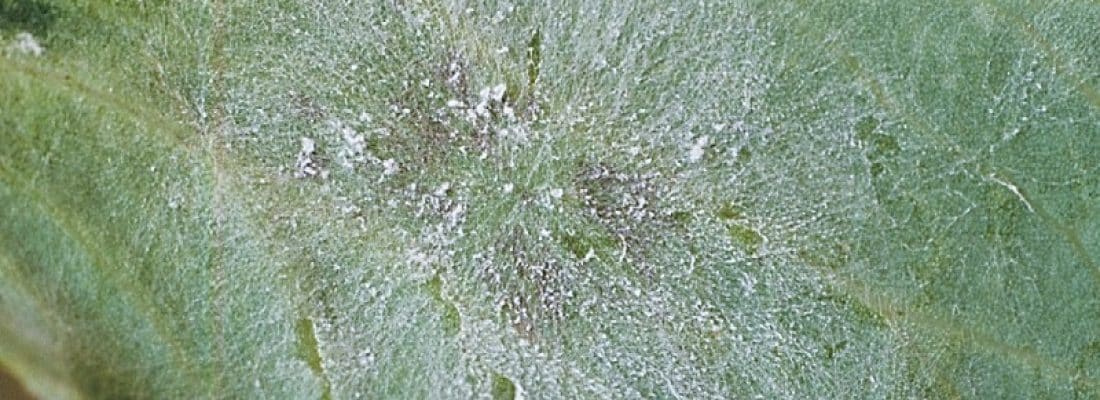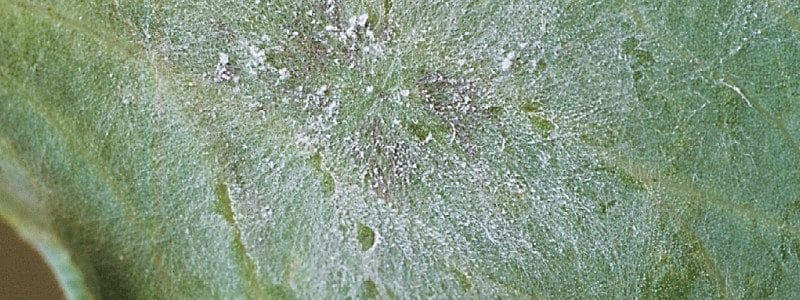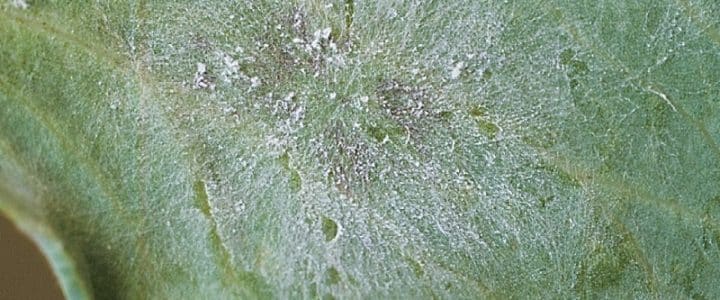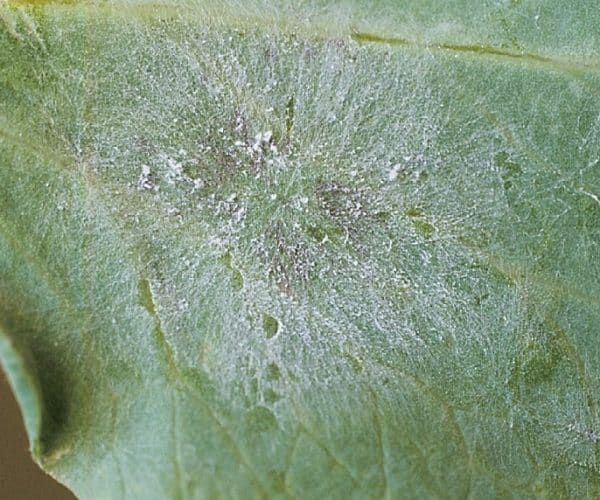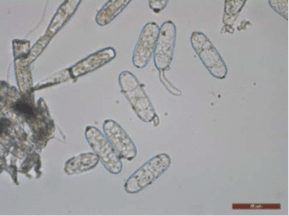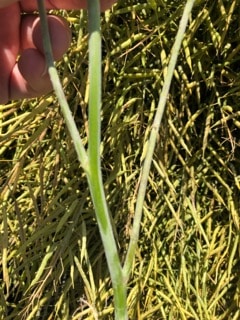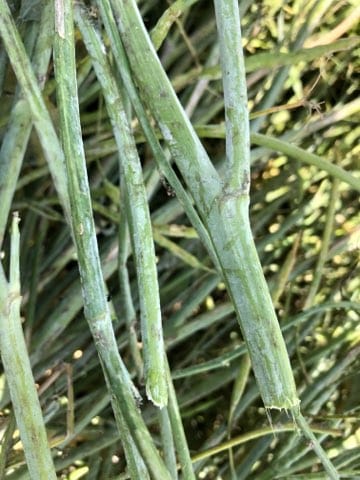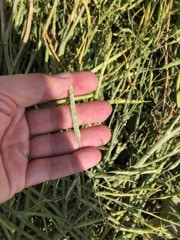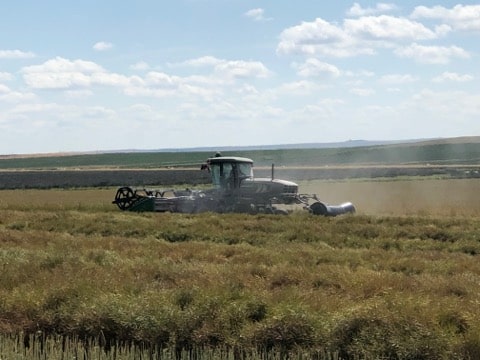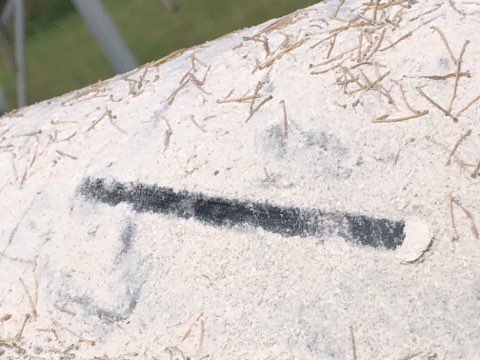Powdery mildew in canola is caused by the fungus Erysiphe cruciferarum. It causes powdery, white fungal growth on canola leaves, stem and pods and is best noticed at swathing timing, when white clouds of dust are released.
Disease cycle
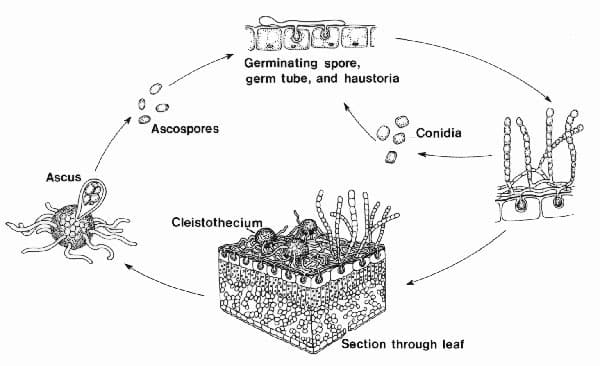
Powdery mildew on canola is caused by the fungus Erysiphe cruciferarum.
The pathogenA disease-causing organism (such as a fungus or bacteria). More overwinters as cleistothecia (small, black spheres) which germinate in spring to produce sexual ascosporesMicroscopic asexual spores that typcially become airborne. More. Asexual spores (conidiaSingle-cell spores or fungal propagules (such as those Verticillium species form). More) are produced on infected plants and can be wind-blown to new fields.
The disease cycle begins when ascosporesMicroscopic asexual spores that typcially become airborne. More or conidiaSingle-cell spores or fungal propagules (such as those Verticillium species form). More land on the upper surfaces of leaves, or on stems, and the temperature is between 20 to 27 degrees Celsius and the relative humidity is between 50 and 95 per cent.
The fungus penetrates leaves, grows inside epidermal cells, takes nutrition from the plant and sporulates.
Resulting plant symptoms are first observed on the under-side of older leaves. Later, white spots appear on upper and lower leaf surfaces, stems and/or pods, and may expand to cover the entire surface of the host tissues.
The pathogenA disease-causing organism (such as a fungus or bacteria). More has a polycyclic life cycle where a single infection site can quickly produce condia that infect and cover all nearby leaves, stems and pods with symptoms.
Infected leaves may wither and die. The loss of photosynthetic area is the main cause of yield loss 1.
Symptoms
Symptoms include dusty, or powdery, white fungal growth on canola leaves, stem and pods. Powdery mildew infections have been discovered at swathing timing when white clouds of dust are released and equipment can become coated with the white powder 1.
Management
Powdery mildew is not considered a serious problem in Canadian canola since the disease is fairly uncommon and most infections occur too late in the season to cause significant yield loss.
Growers concerned about the disease impacting canola yields can utilize management practices that avoid excessively dense and wet crop canopies. This can include avoiding excessive nitrogen fertilization, avoiding over-irrigation and eliminating volunteer hosts and weeds 2.
At this time there are no products registered for control of powdery mildew in Canadian canola 3.
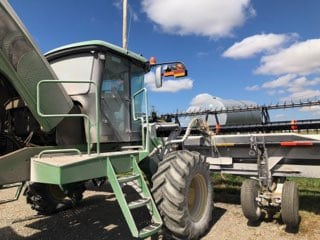
Footnotes
- Michael (Mike) Harding, Research Scientist in Plant Pathology Program at Crop Diversification Centre South. Government of Alberta, March 2020[↩][↩]
- Michael (Mike) Harding, Crop Assurance Lead (and former Research Scientist in Plant Pathology Program) at Crop Diversification Centre South. Government of Alberta, March 2020.[↩]
- Manitoba Agriculture. 2021. Guide to Field Crop Protection 2021. Plant Disease Control section. Available online.[↩]
